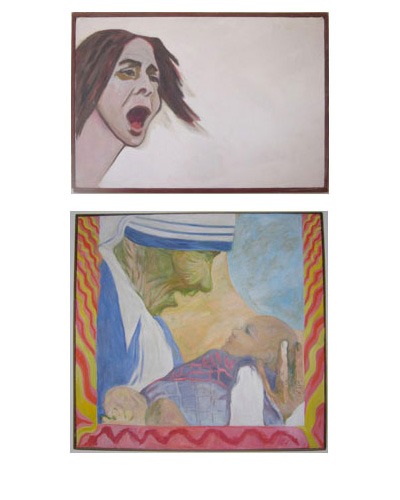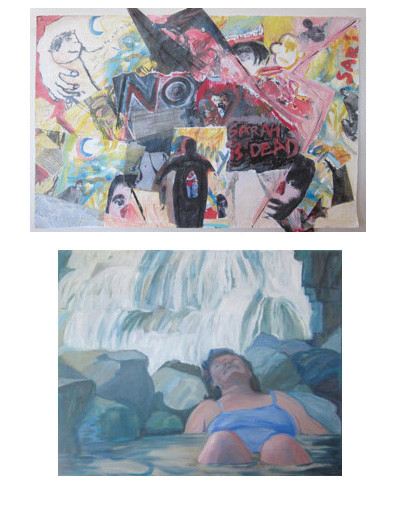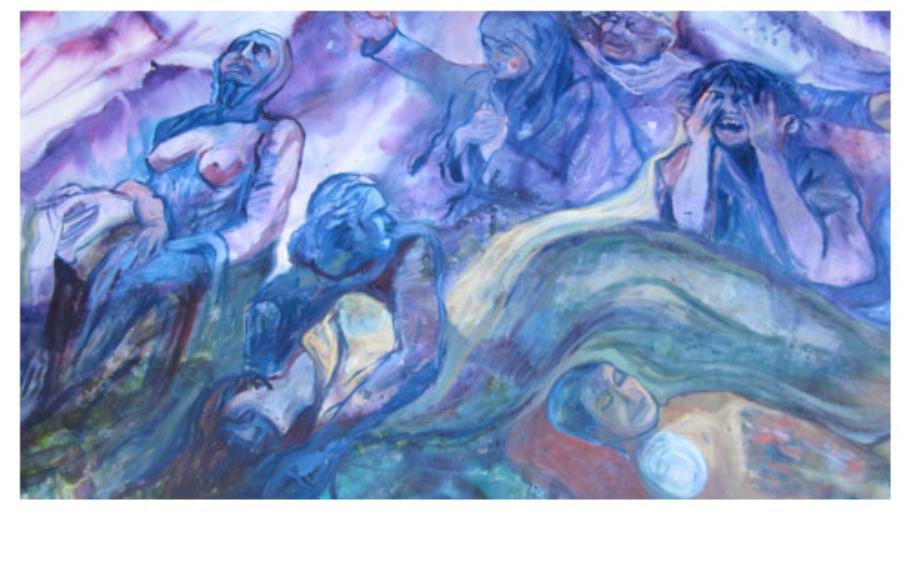An Art Therapist's Story: The Lived Experience of Art as a Healing Modality
Anne G. Kellogg's story is inspiring. It epitomizes the experiences of art therapists who come into the field with a history of art-making that has contributed to their well-being, perhaps even to their survival. Additionally, her story illustrates the way that art therapists use their personal relationship with art to inform their clinical practice. Lastly Anne's story magnificently illuminates the potential for art therapists to utilize the art to help transition through tragic losses and integrate their clinical understandings with their passion for creative expression.
Art as a Way of Life
Anne has always made art. She began her training as an art therapist at the age of forty-eight, coming to her clinical life as an artist, a teacher, a mother, a social activist. Anne grew up in a home that encouraged and supported creativity and in high school she augmented her artistic development with summer scholarships to Otis Art Institute and the Art Center of Design.
She graduated from Pomona College with a major in psychology and a minor in art and taught elementary school in a rural setting in the mountains of Southern California for eighteen years. During this time, she became involved with social justice issues, focusing on providing sanctuary for Central American refugees. One refugee drew pictures of the atrocities he had experienced in El Salvador. This experience seeded her art therapy master's research project several years later, giving voice to the voiceless.
Two paintings she made during this time reflect the ways in which she intuitively used her voice to both process her feelings and advocate for the oppressed. Her painting of a scream done in response to the 1970 Kent State shootings (Figure 1) illustrating her grief and her outrage was copied from a photo on the cover of Time Magazine that year. Figure 2 (a painting of Mother Teresa) reflects her affiliation with the Catholic Church and the beginnings of her inspired work with refugees. It is interesting in these images to notice the open mouths expressing both pain and compassion. This theme of finding one's voice is an early manifestation in Anne's work and seems to continue as she deepens her commitment to the utilization of art for social action, for psychotherapy and for personal expression.
Becoming an Art Therapist
As Anne integrated the theories and practices of clinical art therapy, her work with patients and her own art-making developed a reciprocity that enhanced the art she made and the art she facilitated. As a graduate student at Loyola Marymount University, working with Professor Maxine Junge and fellow students, she focused her master's research project on the uprooting, migration and relocation experiences of Central Americans in Los Angeles.
She presented this work (Figure 3) at the AATA conference in 1989, one of the first art therapists to see the potential for the modality to be a voice for disenfranchised Latino refugees. At this point the focus on social justice that had naturally gravitated into her creative process began to clarify. As she housed Central American refugees and continued her work at the shelter, her paintings reflected her deep concern for these people, whose stories of horrendous suffering and courageous survival had moved her. The stories become hers to tell in her art. In paintings created in 1989, stimulated by the service/scholarship project at Casa Grande, she reflects her deepening understanding of the intimacy of her connection to her clients through art.
Practicing Art Therapy
As Anne developed her psychotherapy skills, became licensed and registered and developed an extensive repertoire of clinical experiences, she found her own artwork to be changing. Her totem paintings (Figure 4) reflect this time of personal growth and tremendous direction.
Anne speaks about the importance of continuing to teach weekly classes at the community college in Art Media for Early Childhood. Teaching about the different media brought new life to her own art and to the art she encouraged/facilitated in her clients.
Art & Personal Bereavement
When Anne's daughter was killed in a tragic bike accident, the art she had always made and the art she had witnessed as healing for others, became a source of her own survival. Figure 5 reflects the ways she utilized the process to express her incomprehensible grief while Figure 6, a painting of her daughter that she made shortly after her death, illustrates the way Anne was able to access imagery that provided some sense of connection, relief and peace.
Retirement
Now as Anne re-shifts her identify from art therapist to artist, her work reflects the inseparability of these two identities. She continues to work prolifically with a sensitivity that is deeply informed by her lived experiences and her compassion for the suffering caused by the ongoing war in Iraq and Afghanistan. As a child, after World War II, she committed herself to working for peace. Art has given her a way to give voice to her concerns and to the concerns of her clients.
In retirement, Anne is once again a learner, a student. She is free to explore a variety of media in the expanded space and time that retirement allows. Improvisation takes over in the present experience of art making as she allows herself to disappear in the process. She continues volunteering by offering art experiences to various non-profit organizations but now her focus is much more on her own creativity. The child that used to draw under her mother's piano is alive and well and grateful. Her recent work, as exemplified by Figure 7 and Figure 8, has matured and become more nuanced, perhaps suggesting the reciprocal relationship between compassion and suffering, between art making and art viewing and between Anne's own interior process and the voice that a life time of art-making has given her.
Conclusion
Just as the art has become a voice for Anne, she has found poetry to also be a vehicle to express the internal experiences of her life. As Anne describes, she has been inspired by the words of T.S. Eliot and the following verses seem like a fitting conclusion to this brief story of exploration, self-knowledge and creativity.
We shall not cease from exploration
and the end of all our exploring
will be to arrive at the beginning
and know it for the first time

Top: Figure 1, "Kent State No More", 1970; Bottom: Figure 2, "Mother of Joy", 1986

Figure 3, "Desaparecidos", 1989

Figure 4, "Earth Totem"

Top: Figure 5, "No"; Bottom: Figure 6, "At-Peace"

Figure 7, "Against the Surge"

Figure 8, "We Shall Not Be Silent"
